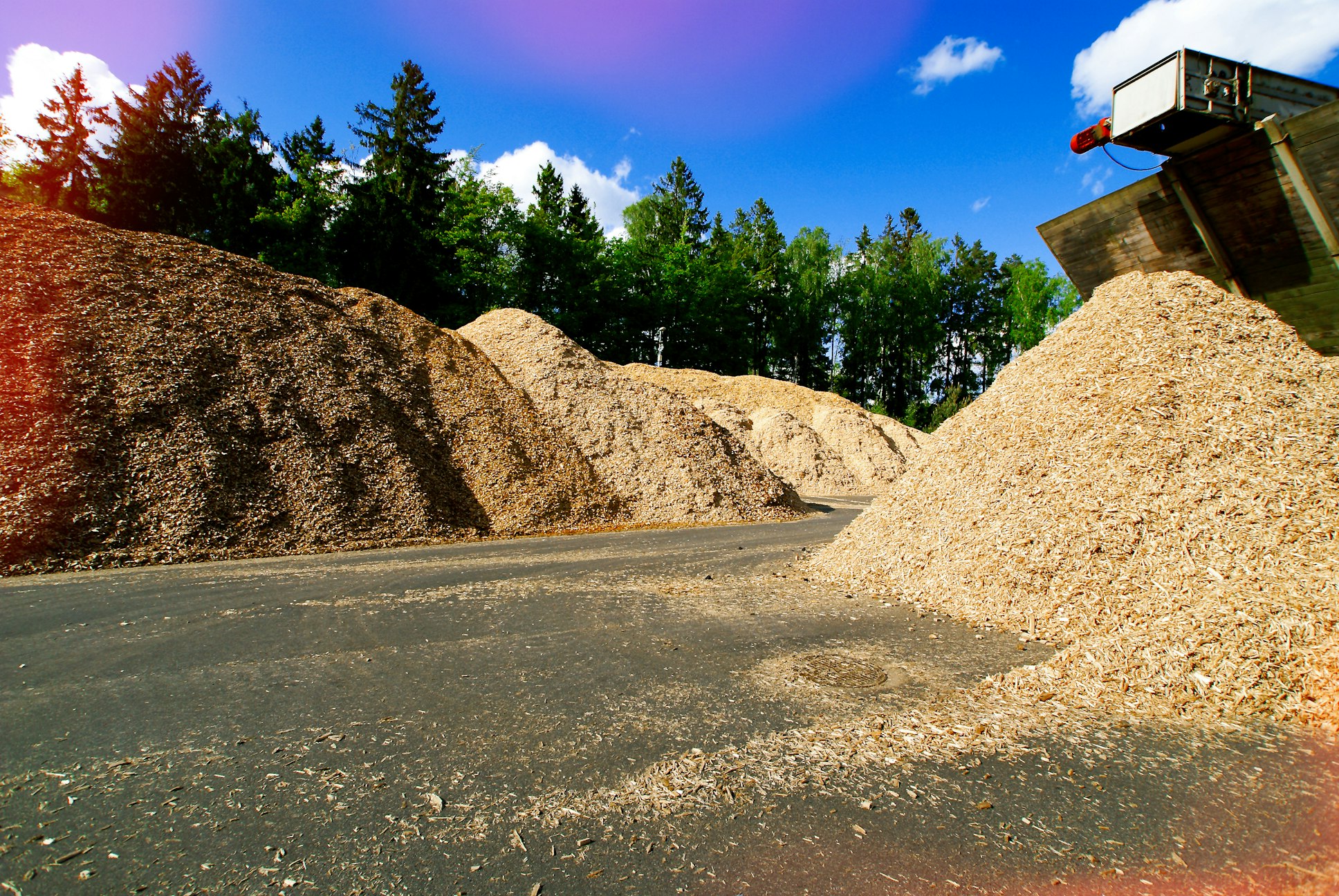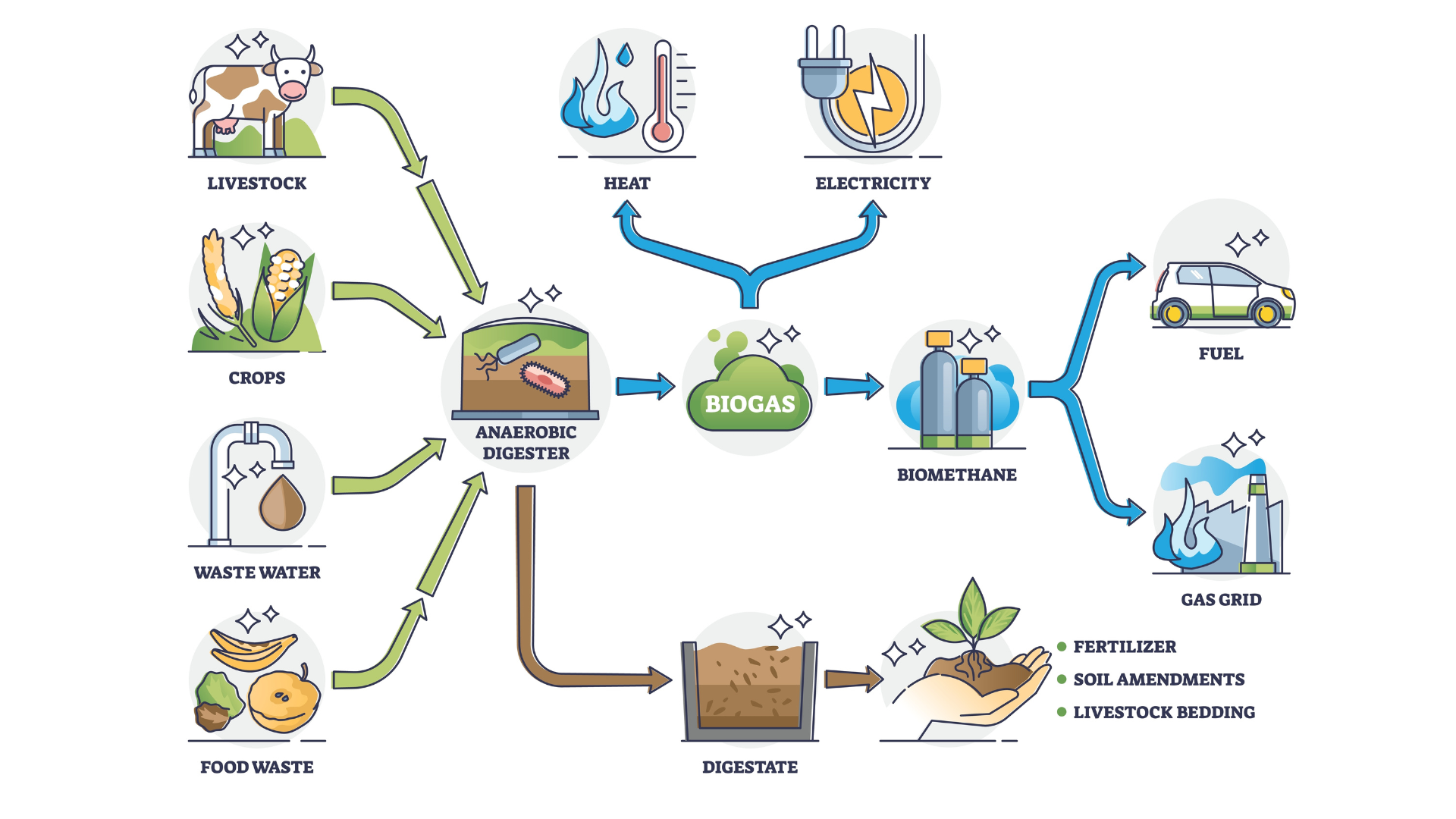
Biomass is an alternative renewable energy source to fossil fuels.
Biomass represents a solution of great relevance in the current scenario characterized by the energy crisis and the desire to find options aimed at reducing our dependence on foreign energy supplies. In addition, it has the great advantage of producing energy in a programmable and continuous manner, thus offsetting the intermittent supply of other sources of renewable energy, such as wind and solar, which are closely tied to weather conditions.
What is biomass
To understand what biomass power plants are fueled with, let’s start with the definition of biomass given by the European Directive 2009/28/EC, which identifies it as “the biodegradable fraction of products, waste and residues of biological origin from agriculture (including plant and animal substances), forestry and related industries, including fisheries and aquaculture, as well as the biodegradable fraction of industrial and municipal waste”.
In other words, the definition includes waste from the food industries, energy crops, firewood, residues from agricultural and forestry activities, seaweed, vegetable oils, livestock manure and OFMSW, or the organic fraction of municipal solid waste.
How a biomass combustion plant works
Historically, firewood was the first form of energy used by humanity, even before the adoption of coal, gas and oil, and it is still widely used for domestic heating through fireplaces or pellet stoves. The current large-scale exploitation, on the other hand, is much more intense in countries with favorable legislation (e.g. Germany, Austria, Denmark and Spain), while in others, like Italy, it is mainly hampered by public opinion and by the opposition of local committees.
But how is energy produced from biomass? There are several processes that make it possible to transform organic materials from plants and animals into energy, but all share a basic operation. They take place inside a thermal plant, where the combustion of organic materials generates heat, which transforms the water of the thermodynamic circuit into steam. The steam rotates a turbine which puts into action the rotor of an alternator, producing alternating electric current.
What are biomass cogeneration plants used for
A biomass cogeneration unit is useful in all cases where simultaneous production of electricity and heat is necessary, such as district heating or certain industrial productions. Inside, the biomass can be used raw or treated.
In the first case, the raw biomass is conveyed to a burner which generates heat. The heat in turn heats a working fluid (usually water) that transforms into steam, acquiring mechanical energy through a pressure increase. The mechanical energy powers a turbine connected to a generator, which produces electricity. Part of the heat produced is conveyed to a hot water circuit which powers the thermal utilities.
In the case of biomass treatment, for example, through anaerobic digestion of organic materials in the absence of oxygen, the plant is powered by biogas, which has characteristics similar to methane gas. This biofuel powers an internal combustion engine connected to an electric generator and allows the simultaneous generation of electrical energy, hot water and steam.
Biomass power plants: advantages and disadvantages
Benefits include:
The possibility of storing biomass makes it the only renewable energy source with which programmable and continuous energy can be produced, balancing wind and solar production;
Biomass does not increase the amount of carbon dioxide in the atmosphere because the amount of carbon in biomass is already part of the natural carbon cycle;
A biomass plant offers cost-saving aspects related to reduced raw material procurement and operating costs;
In cases where the waste residue is used, biomass fully falls under the circular economy model, enabling a virtuous mechanism of resource reuse and waste management.
Although the advantages are significant, there are also a number of key issues, particularly related to:
The type of materials used: in the case, for example, of firewood, the issue of clearing and replanting should be considered;
Transportation costs: can be high if biomass comes from areas far away from the plants. In this case, the problem could be mitigated by locating biomass power plants in agricultural areas close to farms and land where the raw material is produced;
Land use: this issue primarily concerns the use of dedicated crops, typical for example of biogas plant supplies used in the past. Today, many national regulations, including those adopted in Italy, are geared toward the use of agricultural and livestock waste, thus solving the problem at its root.
Ecological transition and biomass power plants
In order to be successful, the road to the energy and ecological transition must include the contribution of different technologies, such as biomass power plants, but not only. However, we must keep in mind that every solution involves pros and cons, which must be carefully balanced through the right legislative support and the improvement of available technologies.
